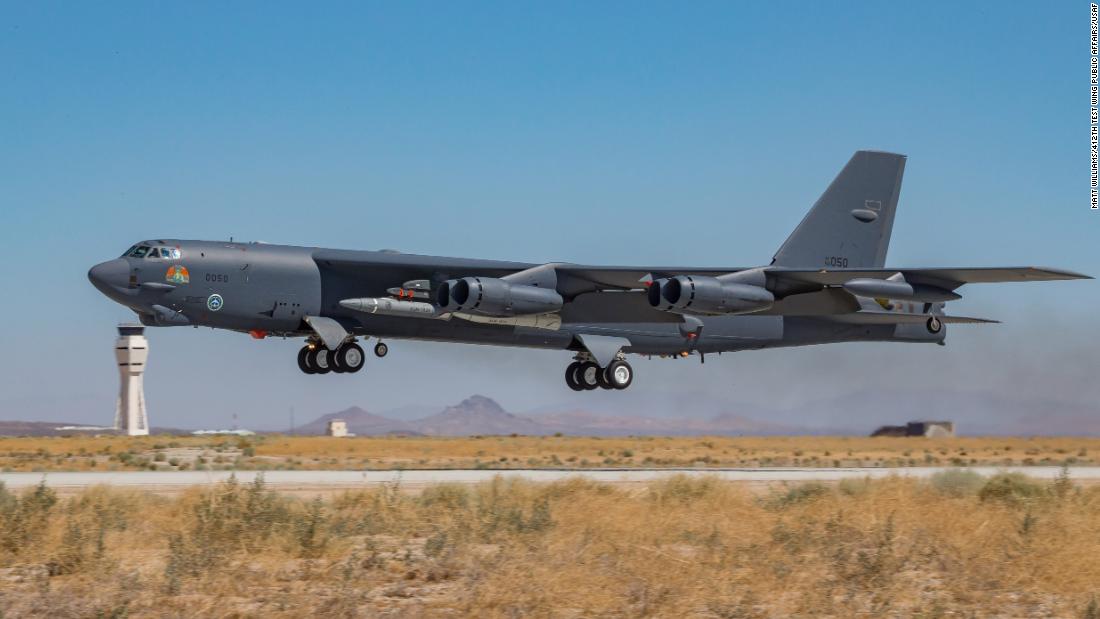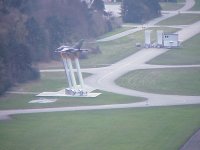China's approach to SCS is very restrained and measured, cause China still wants to be a good friend and partner of ASEAN and every member country of it, but to Japan China always plays hardball, China sees Japan and US as one, the evil force trying to block China's rise, there's no love lost between the two countries.
You are using an out of date browser. It may not display this or other websites correctly.
You should upgrade or use an alternative browser.
You should upgrade or use an alternative browser.
China Chinese Navy Growth: Massive Expansion Of Important Shipyard
- Thread starter xizhimen
- Start date
Jagdflieger
Contributor
Depends onto what promises the USA is going to make towards Japan, and how long it will take the Japanese to realize - that the USA isn't coming.But Japan also needs to keep an eye on Russia, which becomes very hostile towards Japan recently, with the mounting pressure from Russia, Japan would be not likely to take their chance with China, I guess, I could be wrong though, because Japanese are totally different species and no one knows what's really on their mind.
And Okinawa-ken as recent issues have shown again isn't a big fan of the USA at all - so Japan's government and the USA might risk eventually far more then just the Senkaku/Diaoyu islands.
Sorry but the USA does not have hyper sonic missiles yet.

The Latest US Test Flight of a Hypersonic Weapon: the Common Hypersonic Glide Body
Many of the challenges of hypersonic flight, such as the cumulative effects of extreme aerodynamic heating as glide vehicles speed through the atmosphere, become increasingly intractable as range and flight time increase. With long-range performance proving elusive, the Pentagon has shifted the offi
allthingsnuclear.org

US tested hypersonic missile in mid-March but kept it quiet to avoid escalating tensions with Russia
The US successfully tested a hypersonic missile in mid-March but kept it quiet for two weeks to avoid escalating tensions with Russia as President Joe Biden was about to travel to Europe, according to a defense official familiar with the matter.
one is a waverider, the other air breathing hypersonic
yeah sure, the Tomahawk devastated the Iraqi IADS of ODS, on of the most dense and sophisticated IADS in the world at the time.And cruise missiles (far too slow) are primarily only useful against underdogs.
So here's some counterpoint in regards to cruise missile being underdogs:
land/sea based sensors are line of sight (LOS) limited, low flying cruise missile are just as hard to intercept as high and fast flying projectiles, at best you only have seconds before onboard sensors could pick an incoming cruise missile as it appears out of nowhere, yeah so much so for being underdogs.
being slow is actually one of the advantage of a cruise missile, not a weakness themselves. Fire solutions on the missile corresponds with the time and thereby speed. The greater the speed, the greater the demand on the sensor/guidance integration to have a no-miss first pass solution.
Hypersonic missile body shape are designed to reduce drag coefficient, hence most of those missiles has a very small nosecone, some are even flat, not great at all to accommodate sensors. the smaller the volume, the more limited the sweep of the sensors are, and because it is faster, they have little time to discriminate objects, now add countermeasures and poof.
Just how hard is it to hit a moving object while being high and fast, make you own conclusion
also the recent sinking of the Moskva involves Neptune sub sonic cruise missile, the JASSM and its anti shipping variant the LRASM are a quantum leap ahead of those Neptune. the LRASM has AI integrated into it.
True they're not making it towards China, their payloads will. The JASSM in its baseline variant is +370km, the JASSM ER 925km and the XR is close to 2000km. Flying from Alaska, Diego Garcia and launching it from the relative safety of Japan and the Indian ocean.The likely hood of a B-52 making it towards China is more like 0,

the B-1 wouldn't fare much better
and the B-2 aren't enough to provide a winning factor.
An AGM-158 JASSM has only an effective range of 350-400km, JASSM-ER range around 900km and even the JASSM-XR with a range of around 2000km isn't expected to enter service before 2024. The best part is that both the JASSM-ER and XR don't fit into the internal weapon-bay of the F-35. All of them are sub-sonic so good luck to them penetrating China's air-defense.
First of all, they occupy different roles, non VLO platforms like the B-1 or B-52 uses what is called a stand off weapons, lobbing long range missile in the relative safety out of enemy air defense. This will likely be used against targets ranging from PLAN ships, Chinese islands facilities in the SCS to blind Chinese surveillance and knock out Chinese A2/AD in the SCS.
A strike deep inside China would require what is called a stand in strike, this where the VLO (very low observable) B-2 and the upcoming ELO (extremely low observable) B-21 raiders shine. A stand in strike means the platform are deep inside the very bubble of enemy air defense, once they're there, they will lob cheap JDAM to devastating effect and run away undetected. This is how the F-117 are utilized in the opening days of Desert Storm. Meaning these will likely be used against Chinese industry, infrastructure (dams, power plant, bridge, shipyard etc) and anything that contributed to the Chinese war effort.
As for F-35 it is VLO enough, and China doesn't have anything close to its LO characteristics. And soon the F-35s will be equipped with the SiAW (Stand in Atttack Weapons), reportedly a modified AARGM-ER used for high speed stand in strike.
as the video suggest, it could be launched from the weapons bay or from the wing.
The B-1 will off course fare much better than the Xian H-6, the H-6 is actually closer to a P-8 Poseidon when it comes to weapons load and with inferior range and electronics. I think the P-8 is the underdog that no one really thinks much but deserve to be feared. Simply there are currently hundreds of those P-8 that could be turned into a quasi naval bomber, complicating Chinese effort in its defense.
Jagdflieger
Contributor
Great 2 prototypes of which one failed - China has them already in Service - the USA will take at least 2-3 years to get them in service - and in the meantime China will continue producing it's existing hyper-sonic missiles.one is a waverider, the other air breathing hypersonic
The Golf-war was 30 years ago - and Iraq's air-defense was totally useless - when we (Bundeswehr) inspected their positioning and setup (in 1987/8) - we were just laughing and shaking our heads. Furthermore the Iraqi's did not posses any integrated AWACS systems. Not even to mention sattallites. It's is only the US military that was purposely highlighting Iraq's supposed military capabilities. Basically making their war/victory look great but mainly to convince Congress to add billions extra towards the US defense budget. - BTW very successfully.yeah sure, the Tomahawk devastated the Iraqi IADS of ODS, on of the most dense and sophisticated IADS in the world at the time.
The training and capability status of the Iraqi Armed forces was total sub-standard. Even towards simple methods such as plot-clotting radars the Iraqi's were completely helpless, not even to mention the usage of electronic decoy's and other radar suppression methods. They were literally sitting ducks.
Who say's that e.g. in Hyper-sonic missiles, or ballistic missiles, sensors and avionics are positioned in the cone? You believe that when e.g. China paraded their Hyper-missiles - that they showed the actual designed version? Also the main version of a hyper-sonic missile is that of carrying a tactical nuke warhead. China in contra to the USA has already conducted numerous very successful target strikes.Hypersonic missile body shape are designed to reduce drag coefficient, hence most of those missiles has a very small nosecone, some are even flat, not great at all to accommodate sensors. the smaller the volume, the more limited the sweep of the sensors are, and because it is faster, they have little time to discriminate objects, now add countermeasures and poof.
True they're not making it towards China, their payloads will. The JASSM in its baseline variant is +370km, the JASSM ER 925km and the XR is close to 2000km. Flying from Alaska, Diego Garcia and launching it from the relative safety of Japan and the Indian ocean.
First of all, they occupy different roles, non VLO platforms like the B-1 or B-52 uses what is called a stand off weapons, lobbing long range missile in the relative safety out of enemy air defense. This will likely be used against targets ranging from PLAN ships, Chinese islands facilities in the SCS to blind Chinese surveillance and knock out Chinese A2/AD in the SCS.
A strike deep inside China would require what is called a stand in strike, this where the VLO (very low observable) B-2 and the upcoming ELO (extremely low observable) B-21 raiders shine. A stand in strike means the platform are deep inside the very bubble of enemy air defense, once they're there, they will lob cheap JDAM to devastating effect and run away undetected. This is how the F-117 are utilized in the opening days of Desert Storm. Meaning these will likely be used against Chinese industry, infrastructure (dams, power plant, bridge, shipyard etc) and anything that contributed to the Chinese war effort.
You think that China doesn't know all that? - you are describing scenario's that would implement US mobilization - thus China would be prepared to take the necessary counter measures.
As for F-35 it is VLO enough, and China doesn't have anything close to its LO characteristics. And soon the F-35s will be equipped with the SiAW (Stand in Atttack Weapons), reportedly a modified AARGM-ER used for high speed stand in strike.
Even modified J-10's are on par with the RCS and antenna emission of an F-35 - and China's air-defense unlike that of Russia X/Ku/K/Ka-band, is mainly based on, VHF, S and L band. The USA and it's F-35 operating partners biggest weakness is the total lack of systems - ensuring the actual VLO/LO, before going into action. AFAIK only Germany and China have such a system. If one does not have such a measuring installation or system - the VLO/RCS is just theory.
See below photo of Rasigma2 installation test in 1996 the aircraft can be turned 360degree. Rasigma 1 was setup in 1992 and Rasigma 3 is totally different but using the same approach. Compared to the US style that is based on static open air and indoors ECM hangars and computer simulations with mostly scale reduced models - the German system can actually define the exact properties of in-flight real aircraft that are to be used for action. In 2004 US satellites took photos of a similar Rasigma2 installation in Xinjiang.
However they were not able to analyze its capability - and in the meantime rest assured that China has a Rasigma3 system on par with Germany and very likely due to China's funding capabilities even more effective then that of Germany.
Rasigma2 and Rasigma3 is and has been used on any system up to 75 tonnes - including helicopters,ships, vehicles and all other kind of systems. Rasigma 3 isn't even confined to size and weight of the respective object anymore.
Therefore in e.g. Germany we know exactly as to RCS/ECM emissions and other detection factors of US weaponry.
So building and fielding stealth or whatever technology is one thing - to actually test and analyze it, is a totally different story.
The B-1 will off course fare much better than the Xian H-6, the H-6 is actually closer to a P-8 Poseidon when it comes to weapons load and with inferior range and electronics. I think the P-8 is the underdog that no one really thinks much but deserve to be feared. Simply there are currently hundreds of those P-8 that could be turned into a quasi naval bomber, complicating Chinese effort in its defense.
The H-6 isn't intended towards the USA at all. And for those P-8 to engage in such roles they need to be modified accordingly first - not happening right now in any significant range.
Last question on my part - if the USA is so superior then why don't they attack China yesterday? why wait and wait watching China getting stronger and more capable?
I am not saying that China is super duper - but they are already capapble of twarting off a US attack. Attacking the USA IMO is not on China's agenda at all. - why should they?
Attachments
Great 2 prototypes of which one failed -

US-developed hypersonic missile hit within 6 inches of target, says Army secretary
The Army secretary hailed the hypersonic missile's accuracy in his opening speech at the annual AUSA conference

China's hypersonic missile 'went around the world' in July: Top US military official
Though the Chinese weapon missed its target by several kilometers, according to the Financial Times, the test marked the first time any country had sent a hypersonic weapon fully around the Earth.
Though the Chinese weapon missed its target by several kilometers,
Now that we know China already has them in service, which missile brigade actually operate one ? There must be some information on these.China has them already in Service - the USA will take at least 2-3 years to get them in service - and in the meantime China will continue producing it's existing hyper-sonic missiles.
The war is 3 decades old and Russia still struggle to imitate today. China won't likely be different.The Golf-war was 30 years ago - and Iraq's air-defense was totally useless -
when we (Bundeswehr) inspected their positioning and setup (in 1987/8) - we were just laughing and shaking our heads. Furthermore the Iraqi's did not posses any integrated AWACS systems.
Here's the thing when the two forces confronted each other, both had just 'graduate' from their respective combat school, the air planners of Desert Storm were Vietnam war veterans, while Iraqi planners were Iran-Iraq war veterans. In this case the superior US planning won the day.Not even to mention sattallites. It's is only the US military that was purposely highlighting Iraq's supposed military capabilities. Basically making their war/victory look great but mainly to convince Congress to add billions extra towards the US defense budget. - BTW very successfully.
The training and capability status of the Iraqi Armed forces was total sub-standard. Even towards simple methods such as plot-clotting radars the Iraqi's were completely helpless, not even to mention the usage of electronic decoy's and other radar suppression methods. They were literally sitting ducks.
To quote one Desert Storm veteran (Gambit)
I consider the Iraqi Air Force of Desert Storm as competent enough to the point we did not take them lightly. People misunderstood what we did to them. People think that just because they were defeated, the pilots and even their air commanders were inept and ill trained. We did not see the Iraqi Air Force that way.
We defeated the Iraqi Air Force based upon the institutional flaws of the Iraqi Air Force. A major flaw was that the Iraqi Air Force followed rigid Soviet/Chinese combat operations of ground control intercept (GCI) doctrine. Essentially, without ground radars and controllers, pilots have no back up in terms of what to do next, simple as that. The jets have radars, but the doctrine for the use of radar is confined to immediate combat, not much for creative search, track, and allocation of targets among the fighters. All those things must be done by ground controllers.
Both the USAF pilot and The Iraqi air force pilot of Desert Storm had years of experience on what real "non scripted" combat is like, they know how it is to be faced with death and the death of their comrades, not ANY amount of training could compensate for that, the closest thing you get to a real combat in an exercise is Red Flag and China aren't anywhere near to imitate Red Flag.And you think that the Chinese could somehow aahhh face the USAF after graduating from their ahhhh exercise and academies.
Ignore what @xizhimen and his youtube video of flying J-20 pilot at night tells you, China has not had any combat with any serious adversary, Its pilots and instructors had no previous experience on what its like to go into combat, getting shot at etc. Hence China's overall militaries lacks one important part of war, which is institutional memory.
The information held in employees' personal recollections and experiences that provides an understanding of the history and culture of an organization, especially the stories that explain the reasons behind certain decisions or procedures.
SAA Dictionary: institutional memory
Hence the total confidence of the Chinese in this forum might not be shared with Chinese pilots now prepped for war with the US in the Pacific.Either way the size of radar plate is limitedWho say's that e.g. in Hyper-sonic missiles, or ballistic missiles, sensors and avionics are positioned in the cone? Y
So its just mockup then, not real missiles.ou believe that when e.g. China paraded their Hyper-missiles - that they showed the actual designed version? Also the main version of a hyper-sonic missile is that of carrying a tactical nuke warhead. China in contra to the USA has already conducted numerous very successful target strikes.
So what has China prepared ?You think that China doesn't know all that? - you are describing scenario's that would implement US mobilization - thus China would be prepared to take the necessary counter measures.
Nobody really buys a 4th gen fighters could somewhat be on par with a 5th gen fighter. Talking about antennae emmission, the F-35 APG-81 radar si a world beating AESA radar with sophisticated LPI capabilities.Even modified J-10's are on par with the RCS and antenna emission of an F-35
- and China's air-defense unlike that of Russia X/Ku/K/Ka-band, is mainly based on, VHF, S and L band. The USA and it's F-35 operating partners biggest weakness is the total lack of systems - ensuring the actual VLO/LO, before going into action. AFAIK only Germany and China have such a system. If one does not have such a measuring installation or system - the VLO/RCS is just theory.
See below photo of Rasigma2 installation test in 1996 the aircraft can be turned 360degree. Rasigma 1 was setup in 1992 and Rasigma 3 is totally different but using the same approach. Compared to the US style that is based on static open air and indoors ECM hangars and computer simulations with mostly scale reduced models - the German system can actually define the exact properties of in-flight real aircraft that are to be used for action. In 2004 US satellites took photos of a similar Rasigma2 installation in Xinjiang.

And that is bad news, that means China's PLAAF would have to rely more and more on its fighter fleet for attack missions, reducing the numbers to actually defend China's airspaceThe H-6 isn't intended towards the USA at all.
No, the P-8 are certified to fire the Harpoon, SLAM-ER and soon JASSM/LRASMAnd for those P-8 to engage in such roles they need to be modified accordingly first - not happening right now in any significant range.

Navy to Integrate LRASM for P-8 Aircraft | Missile Threat
On January 28, the U.S. Navy issued a solicitation to integrate the Long Range Anti-Ship Missile (LRASM) on its P-8A maritime patrol aircraft. In a February 2 addition, the Navy states that the contract could also include integration efforts for several Joint Direct Attack Munitions (JDAM)...
 missilethreat.csis.org
missilethreat.csis.org
Because US is a hegemon, and no hegemon ever would want war, they want to keep their hegemony safe and wars could overturn those.Last question on my part - if the USA is so superior then why don't they attack China yesterday? why wait and wait watching China getting stronger and more capable?
Its mainly bcs JP-Indian will still not give CN a hard slap like VN did in 2014China's approach to SCS is very restrained and measured, cause China still wants to be a good friend and partner of ASEAN and every member country of it, but to Japan China always plays hardball, China sees Japan and US as one, the evil force trying to block China's rise, there's no love lost between the two countries.
Many Chinese report say new Chinese radar can detect and track F-22 and F-35, US can send them to China to see if those reports are true or not.
China's New Anti-Stealth Radars Can Detect, Track & Shoot US' F-22 & F-35 Fighter Jets – Military Experts
Jagdflieger
Contributor
What is that supposed to be? 

 a static F-117 display monument?
a static F-117 display monument?
Germany had introduced it's prototype Rasigma facility at Manching in 1982 to the USAF due to our own MBB Lampyridae project. therefore we know that the USAF never pursued or enhanced this system.
How we know? - because of common intel and due to the fact that the vast majority of the USAF F-22 aren't stealthy at all due to adverse weather conditions having grave effects onto their coatings - especially those stationed in the Middle-East and Japan.
Anyway - IMO someone who compares the Iraq war with China's capability of 2022 or with that of present Russia, is way off from any reality.
The DF-17 was first identified in open sources in 2014,meaning that China was already working on this technology since at least 2010 and was originally referred to as the DF-ZF. Around this time, test flights and other associated support work were carried out as part of the wider Chinese hyper-sonic program - something the USA just started to do 8 years later. And until today the US does not even have live-sized wind-tunnels for hyper-sonic-vehicle testing.
As for your last statement: Because US is a hegemon, and no hegemon ever would want war, they want to keep their hegemony safe and wars could overturn those.
The USA has been and is constantly waging war towards military underdogs - even without proxies. But never against nuke armed countries!!
And they are aware that conventionally they can't defeat China - therefore all these "alliances blah, blah" only have economic sanctions and disturbance of trade in mind - nothing else.
Germany had introduced it's prototype Rasigma facility at Manching in 1982 to the USAF due to our own MBB Lampyridae project. therefore we know that the USAF never pursued or enhanced this system.
How we know? - because of common intel and due to the fact that the vast majority of the USAF F-22 aren't stealthy at all due to adverse weather conditions having grave effects onto their coatings - especially those stationed in the Middle-East and Japan.
Anyway - IMO someone who compares the Iraq war with China's capability of 2022 or with that of present Russia, is way off from any reality.
The DF-17 was first identified in open sources in 2014,meaning that China was already working on this technology since at least 2010 and was originally referred to as the DF-ZF. Around this time, test flights and other associated support work were carried out as part of the wider Chinese hyper-sonic program - something the USA just started to do 8 years later. And until today the US does not even have live-sized wind-tunnels for hyper-sonic-vehicle testing.
As for your last statement: Because US is a hegemon, and no hegemon ever would want war, they want to keep their hegemony safe and wars could overturn those.
The USA has been and is constantly waging war towards military underdogs - even without proxies. But never against nuke armed countries!!
And they are aware that conventionally they can't defeat China - therefore all these "alliances blah, blah" only have economic sanctions and disturbance of trade in mind - nothing else.
Attachments
Last edited:
What is that supposed to be?

a static F-117 display monument?

The Story behind the Photo of the HAVE Blue model that Lockheed placed on a pole to test the RCS of the stealth demonstrator that led to the F-117 - The Aviation Geek Club
The Story behind the Photo of the HAVE Blue model that Lockheed placed on a pole to test the RCS of the stealth demonstrator that led to the F-117
Sorry , what ? What does the weather has anything to do with LO characteristics ?Germany had introduced it's prototype Rasigma facility at Manching in 1982 to the USAF due to our own MBB Lampyridae project. therefore we know that the USAF never pursued or enhanced this system.
How we know? - because of common intel and due to the fact that the vast majority of the USAF F-22 aren't stealthy at all due to adverse weather conditions having grave effects onto their coatings - especially those stationed in the Middle-East and Japan.
None of my statements ever deny China's quantum leap in modernization, but lets get real. China isn't the same China during Desert Storm, so does the US. The US today is at a magnitude more lethal than the one we saw in Desert Storm.Anyway - IMO someone who compares the Iraq war with China's capability of 2022 or with that of present Russia, is way off from any reality.
Hardware and technology are just tools. There are many factors that could force China on its knee in combat, such as effective command and control, quality of staff etc.
The PLA has this outdated system where there are TWO commanders for any troop, one is military the other is political commissars. lol
Do you really think China could survive using that model of command and control in a fast moving war with the US ??
The US goes to war when its hegemony is threatened, not because it wants one. There's a difference.The USA has been and is constantly waging war towards military underdogs - even without proxies. But never against nuke armed countries!!
And they are aware that conventionally they can't defeat China - therefore all these "alliances blah, blah" only have economic sanctions and disturbance of trade in mind - nothing else.
Jagdflieger
Contributor
yes I know - it's static as such useless or just as good as the usual frontal RCS values in a hangar propagated by the USA. Not to mention antenna measurements.
The Story behind the Photo of the HAVE Blue model that Lockheed placed on a pole to test the RCS of the stealth demonstrator that led to the F-117 - The Aviation Geek Club
The Story behind the Photo of the HAVE Blue model that Lockheed placed on a pole to test the RCS of the stealth demonstrator that led to the F-117theaviationgeekclub.com
Salt and sand have abrasive factors - that damage, tear off the F-22 radar absorbent coating - there are hundreds of photos showing such F-22's.Sorry , what ? What does the weather has anything to do with LO characteristics ?
So has China's ability - something you are in constant denialNone of my statements ever deny China's quantum leap in modernization, but lets get real. China isn't the same China during Desert Storm, so does the US. The US today is at a magnitude more lethal than the one we saw in Desert Storm.
Hardware and technology are just tools. There are many factors that could force China on its knee in combat, such as effective command and control, quality of staff etc.
The "party boy" has no military command function at all - so?The PLA has this outdated system where there are TWO commanders for any troop, one is military the other is political commissars. lol
They have the same command structure as e.g. NATO - they are completley different from Russia, ask any Western military attache.Do you really think China could survive using that model of command and control in a fast moving war with the US ??
I don't believe - neither would you, that e.g. Libya, Syria or Serbia posed a threat to US hegemony. And nothing has changed either, since the USA until today does not control these three countries in any way.The US goes to war when its hegemony is threatened, not because it wants one. There's a difference.
US hegemony is about conducting business with other countries - via imposing the US market system upon them, and thus subjecting them to their demands. That is why they can't stand countries that can't be subjected to those methods - E.g. China, Russia and any other non-US capitalistic minded country, incl. India or Brazil,
or simply any country that beholds a social value and obligation towards it's citizens.
With China's rise in economy and military, now US is no longer able to wage wars oversea as it was capable of doing in the past several decades, overall US is withdrawing from everywhere globally, future world will see less wars and violences after US had been counter balanced.

 www.pewresearch.org
www.pewresearch.org
Prevailing view among Americans is that U.S. influence in the world is weakening – and China’s is growing

Prevailing view among Americans is that U.S. influence in the world is weakening – and China’s is growing
Nearly half of Americans (47%) say that the United States’ influence in the world has been getting weaker in recent years.






